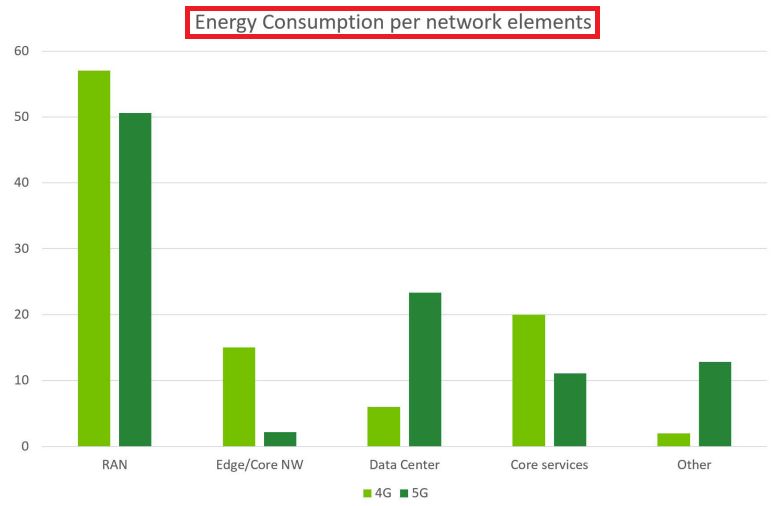The fact of Sustainability in mobile networks starts with power reduction and meeting net-zero goals, and as we know wireless networks consume large amounts of resources, from electricity to raw materials.
📃 GSMA Intelligence published a report looking at network energy efficiency. It found that the RAN consumes 73% of the energy network operators use.
📃 Also, NextGalliance published a report with the below figure clearly illustrates that the RAN consumes the most power. Although RAN power consumption is reduced in 5G, it is still over 50% of the total 5G network infrastructure consumption.
📃Another trend worth noting is the rise in data center power consumption in 5G. With many of the core network services moving to the cloud in 5G, we see a reduction in the energy consumption of core network elements from 4G to 5G and an increase in data center energy consumption as these core services migrate to 5G into data centers.
📃 OpenRAN, vRAN, and CloudRAN with decentralization and virtualization of the RAN popularized by Open RAN initiatives will push processing traditionally done in the RAN into software-based (O-DUs) decentralized units and (O-CUs) centralized units.
Why RAN?
Despite improvements in energy efficiency, the RAN continues to consume more power than any other part of the network. This is due largely to new technology like mmWave transceivers and MIMO antennas, all of which require more power.

How can 5G reduce power consumption Vs. 4G
- A significant change between 4G LTE radio and 5G NR is that the latter has an ultra-lean design that minimizes always-on transmissions to enhance network energy efficiency and ensure forward compatibility. In contrast to the setup in LTE, the reference signals in NR are transmitted only when necessary.
- Idle mode transmission is designed with very long-time gaps (up to 20 ms for SA and up to 160 ms for NSA), enabling significantly deeper and longer sleep modes than the 0.2 ms in LTE.
- Pooling baseband-processing resources, when possible, can also lead to more efficient use of processing resources, which is the case in C-RAN, vRAN, and OpenRAN.
